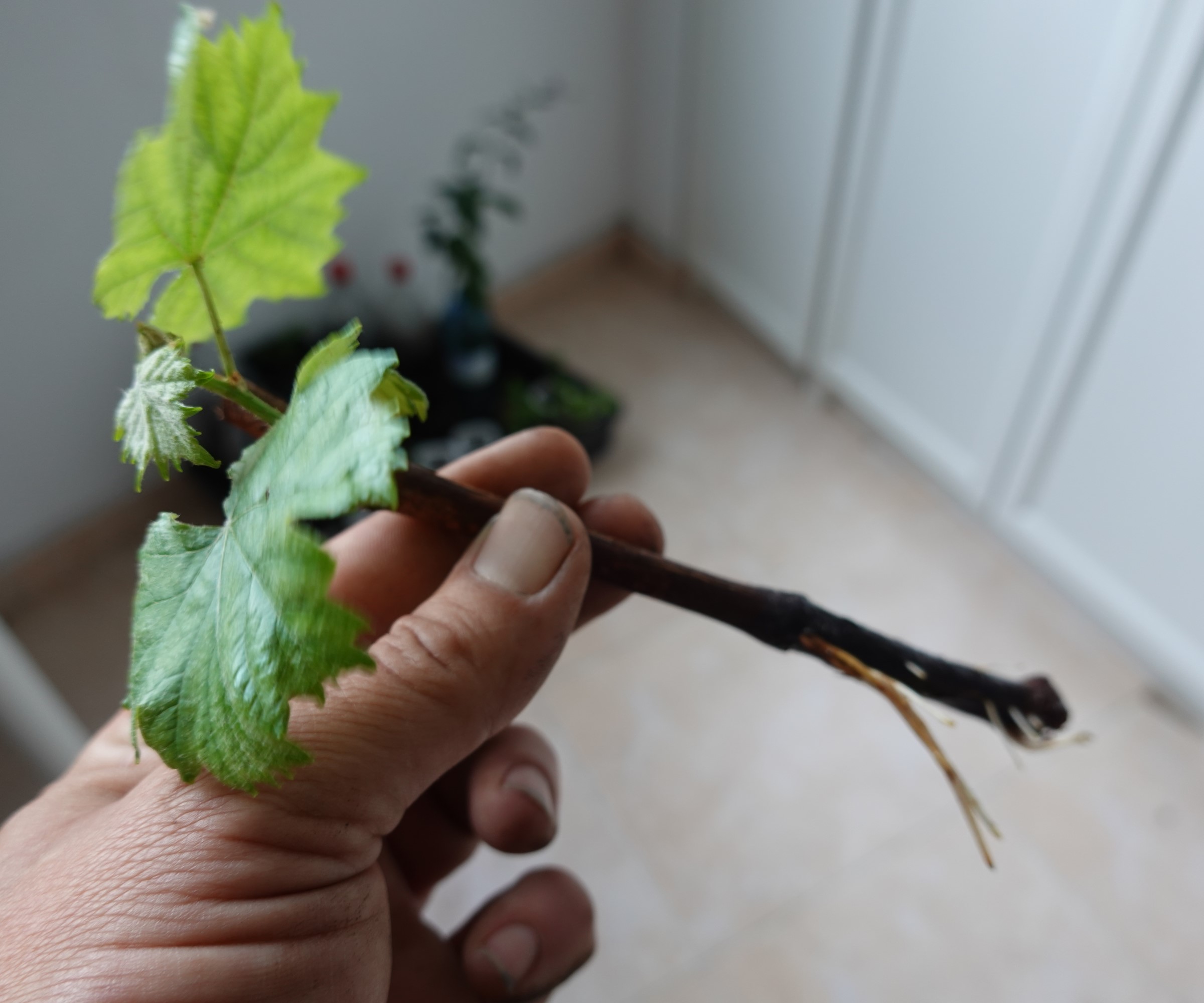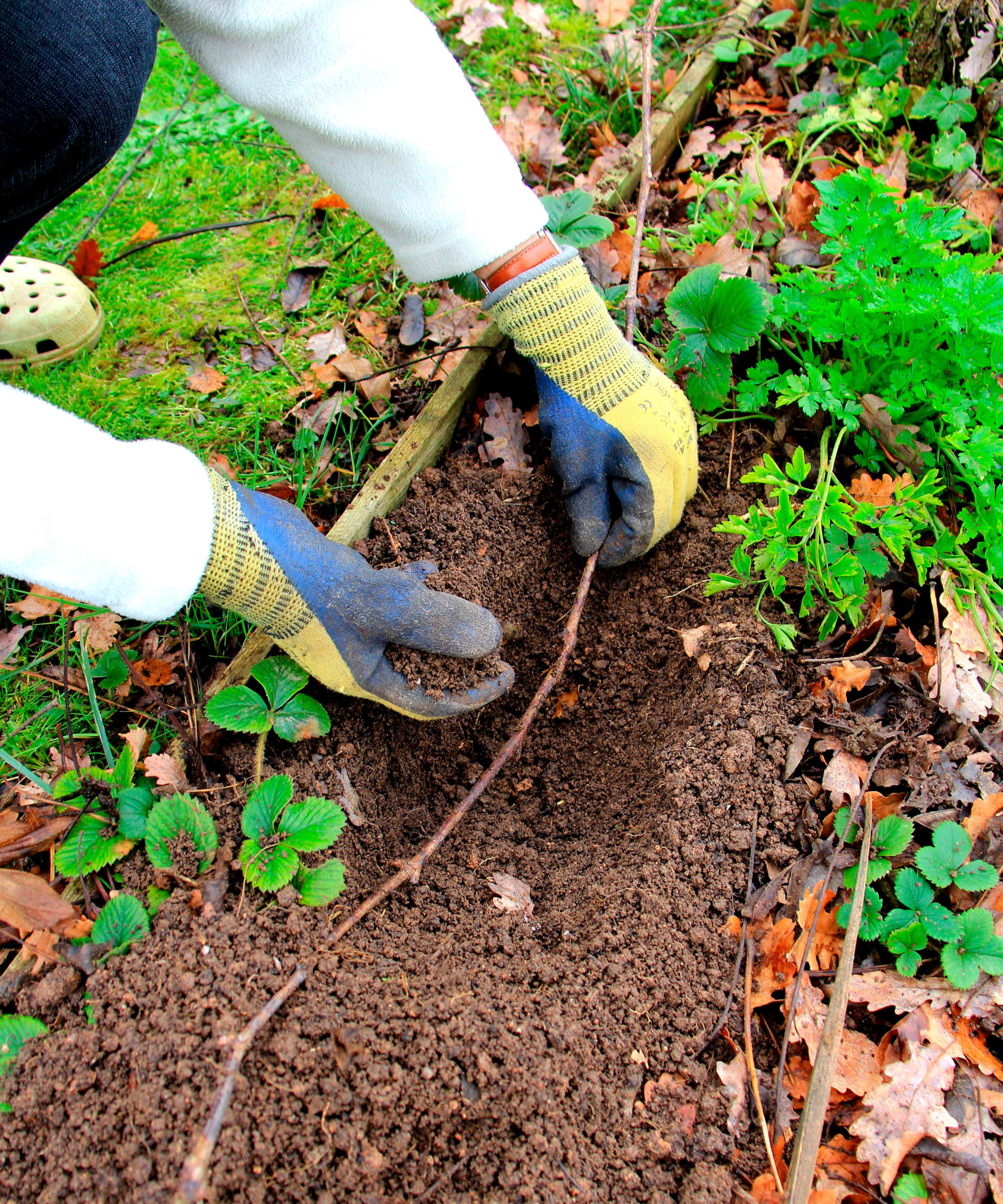You can propagate grape vines from cuttings in 2 ways – here is a simple step-by-step guide to getting new plants for free
Plus, how to propagate grape vines by layering


Homegrown grape vines make stunning additions to a yard and can supply you with fruits for wine, juice, jams, or eating fresh from the vine. If you want more of them, you can propagate grape vines by taking cuttings or layering plants to get new grapes for free.
Grape vines are most commonly propagated by taking hardwood cuttings during dormancy. This reliable method gives you lots of new vines, but there is scope for softwood cuttings in the summer, too. Layering offers a potentially slower route, but it is still successful, while growing grapes from seed offers no guaranteed results.
If you want to propagate grape vines, this guide looks in-depth at all the options available. This includes step-by-step guides to taking cuttings successfully, so you can be confident and get the new grape vines you dream of, along with the ultimate satisfaction of harvesting homegrown grapes from plants you propagated.

Can you propagate grape vines?
You can propagate grape vines, but there is one restriction to consider. Some types of vines are patented varieties, and these cannot be propagated without the patent holder’s permission.
Even if it is a grape vine that you or a friend are growing, it is best to check whether that particular type is patented before taking cuttings.
How to propagate grape vines from cuttings
There are two methods you can use to propagate grape vines by cuttings: either hardwood or softwood cuttings. The former is the most common way, but some grape varieties may respond better to the softwood technique. For both methods, we look at how to take plant cuttings successfully.
Hardwood cuttings

If you desire to propagate grape vines from cuttings, the best and most common method is to take hardwood cuttings during the dormant season.
Design expertise in your inbox – from inspiring decorating ideas and beautiful celebrity homes to practical gardening advice and shopping round-ups.
This is ideally done in late winter, before the vine starts growing for the new year. Waiting too late would be a mistake for cuttings, as grapes bleed profusely from thicker stems when in growth. Pruning grape vines in spring will cause the parent vine to bleed and leave it susceptible to pests and diseases.
Here is how to propagate grape vines from hardwood cuttings in nine simple steps:
- Pick one-year-old wood that grew the previous year. Good material for cuttings will be long, straight, pencil-thick, and free from any damage or signs of disease.
- Taking cuttings with clean and sharp pruning shears of long shoots, before trimming them down to multiple individual cuttings
- Each cutting should be 10-14 inches long and contain at least four buds. It is advisable to take many cuttings, as not all of them will be successful
- Make a flat cut at the base of the cutting underneath a bud, and an angled cut at the top above a bud.
- Fill a pot with a potting soil suitable for cuttings, such as this organic seed and cutting potting mix at Walmart.
- Dip the bottom end of the cutting in rooting hormone. This is optional, but it can help speed up the process of producing roots. You can get rooting hormone powder at Amazon.
- Place the end of the cutting into the soil. At least half of the cutting should be underneath the soil surface.
- Keep the soil moist, but not sodden, throughout the rest of winter and spring.
- Place the container in a sunny and protected spot, such as a greenhouse or cold frame.
Pot up the cuttings into larger containers if they outgrow their current ones, usually identifiable by the roots appearing outside the drainage holes in the pot.
You can ultimately plant the young grape vines into their final position the following spring. As grape vines require a warm and sunny position, this can be outdoors in hotter US hardiness zones, such as trained against a wall and fence, or in a greenhouse in cooler climates.
Softwood cuttings

You can also propagate grape vines from softwood cuttings during the growing season. In particular, softwood cuttings are best if you are growing muscadine grapes and want more plants. The best time to do this is during summer, and, as referenced above, always use clean and sharp pruning tools to take cuttings.
Here is how to propagate grape vines from softwood cuttings in 6 steps:
- Remove vigorous greenwood shoots that have grown this current season; such stems should be sturdy enough to stand upright, while being flexible and able to bend without snapping.
- Take cuttings around six inches long, and remove the leaves from the bottom two-thirds of the stem.
- Trim the cutting below a node at the bottom, and above a node at the top.
- Dip the bottom end in rooting hormone and place in a container filled with a quality potting mix. You can put multiple cuttings into one pot.
- Cover the pot with a plastic bag to provide humidity around the cutting and prevent drying out. Alternatively, place humidity domes on top of the plots, such as these plastic humidity domes at Walmart.
- Place the container in a bright spot, but away from full sun that can potentially scorch it
Roots should form within a month, and the cuttings can be potted up in individual pots soon after. Each new young plant can be planted out once it has a strong root network. If the plants are going indoors, they can be planted that year, while grape vines going outdoors are best planted next spring after the last frost.
How to propagate grape vines by layering

Aside from cuttings, you can also propagate grape vines through a method known as layering.
This process involves selecting lower stems and bending them down towards the soil. Bury and pin the selected stems into the soil. You want around 4-6 inches of stem buried into the soil, and the end of the stem back above the soil and sitting above the ground.
Keep the ground moist, and the buried portion of the stem will slowly develop roots. It may take up to a full growing season, but once it has a strong root system, you can cut the stem from the parent plant to replant elsewhere.
FAQs
Can you propagate grape vines from seed?
You can propagate grape vines from seed. However, it is not a traditional method, as the resulting plant will not be the same as the parent plant from which the grape came. If you want to replicate a particular plant, cuttings are best recommended.
If you do want to experiment and propagate grape vines from seed, collect fruits and separate the seeds from the flesh before putting the seeds in a refrigerator for at least three months. These seeds can be sown a half-inch deep into pots filled with seed compost.
Can you propagate grape vines in water?
Grape vines will root in water. Take cuttings as outlined above and, rather than placing them in pots of soil, submerge the bottom of the cutting in a container of water. Change the water every few days, as not doing so is a water propagation mistake that can lead to rot. Transplant the cutting into soil once it develops roots that reach a few inches long.
Once you know how to take hardwood cuttings, there are lots of ornamental shrubs and soft fruit bushes you can use this technique on. For example, this guide to hardwood cuttings to take in fall showcases a lovely selection of shrubs you can propagate like this during the season. Taking hardwood cuttings of these plants allows you to add lots of plants to your collection for free.

Drew has worked as a writer since 2008 and was also a professional gardener for many years. As a trained horticulturist, he worked in prestigious historic gardens, including Hanbury Hall and the world-famous Hidcote Manor Garden. He also spent time as a specialist kitchen gardener at Soho Farmhouse and Netherby Hall, where he grew vegetables, fruit, herbs, and cut flowers for restaurants. Drew has written for numerous print and online publications and is an allotment holder and garden blogger. He is shortlisted for the Digital Gardening Writer of the Year at the 2025 Garden Media Guild Awards.


